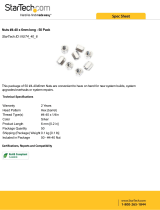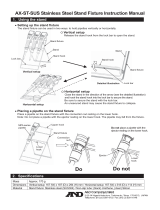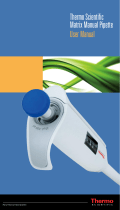
Table of Contents iii
Table of Contents
Table of Contents ........................................................................................................................... iii
Introduction ..................................................................................................................................... 3
Part Checklist and Descriptions ...................................................................................................... 7
Part Checklist .............................................................................................................................. 7
Descriptions ................................................................................................................................. 7
Volume Setting ............................................................................................................................. 11
Pipetting and General Guidelines ................................................................................................. 15
Pipetting .................................................................................................................................... 15
Fitting the tips ....................................................................................................................... 15
Pre-rinse the tips ................................................................................................................... 15
Aspirate ................................................................................................................................. 15
Dispense ................................................................................................................................ 16
General Guidelines .................................................................................................................... 16
Specifications ................................................................................................................................ 19
Gilson’s maximum Permissible Error Table ............................................................................. 19
GLP Features and Accessories ...................................................................................................... 23
GLP Features ............................................................................................................................. 23
Accessories ................................................................................................................................ 23
Leak Test and Troubleshooting .................................................................................................... 27
Leak Test ................................................................................................................................... 27
For the P2 to P200 models .................................................................................................... 27
For the P1000 to P10ml models ............................................................................................ 27
Troubleshooting ........................................................................................................................ 27
Maintenance .................................................................................................................................. 31
Changing the Tip-ejector ........................................................................................................... 31
Changing the Tip-holder ........................................................................................................... 31
Handling the Pistol Assembly ................................................................................................... 31
Changing the O-ring .................................................................................................................. 32
Cleaning and Decontamination ..................................................................................................... 35
Cleaning .................................................................................................................................... 35
External ................................................................................................................................. 35
Internal .................................................................................................................................. 35
Autoclaving ........................................................................................................................... 35

























